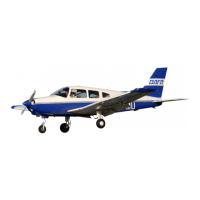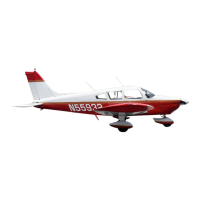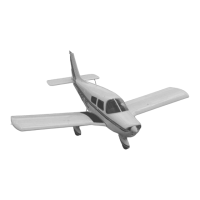PIPER
AIRCRAFT
CORPORATION
PA-28·161, WARRIOR
II
NARCO ELT 910 OPERATION
SECTION.7
DESCRIPTION
&
OPERATION
On the ELT unit itself is a three position switch placarded ON, OFF and
ARM. The ARM position sets the ELT so that it will transmit after
.impact and
will continue to transmit until its battery is drained. The ARM position is
selected when the ELT is installed
in the airplane and it should remain in that
position.
A pilot's remote switch. placarded
ON
and ARM, is located on the left
side panel to allow the transmitter to
be
armed or turned on from inside the
cabin. The switch is normally in the ARM position. Moving the switch
to
ON
will activate the transmitter. A warning light, located above the remote switch,
will blink continuously whenever the ELT is activated.
NOTE
The warning light will not blink if the ELT is
activated
by
an
incident
that
also
results
in
severance
of
the airplane's power supply lines.
Should
the ELT be
activated
inadvertently it can be
reset
by
either
positioning the remote switch to the ON position for two seconds, and then
relocating it
to
the ARM position, or by setting the switch on the ELT to OFF
and then back
to
ARM.
In the event the transmitter is activated by an impact,
it
can
be
turned off
by moving the ELT switch
OFF. Normal operation can then
be
restored
by
resetting the switch to ARM. It may also be turned off and reset by positioning
the remote switch to the
ON position for two seconds, and then to the ARM
position.
The transmitter
can
be activated manually at any time by placing either the
remote switch or the ELT switch to the
ON position.
Ground
Check
The ELT should be checked during postflight
to
make certain the unit has
not been activated. Check by selecting 121.50 MHz on an operating receiver.
If
a downward sweeping audio tone is heard, the ELT may have been activated.
Set the remote switch to ON.
If
there
is
no change
in
the volume
of
the signal,
your airplane
is
probably transmitting. Setting the remote switch to ARM will
automatically reset the ELT and should silence the signal being received on
121.50
MHz.
ISSUED: FEBRUARY 28, 1990
REPORT: VB-1180 I
7-24a
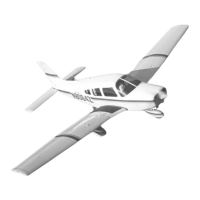
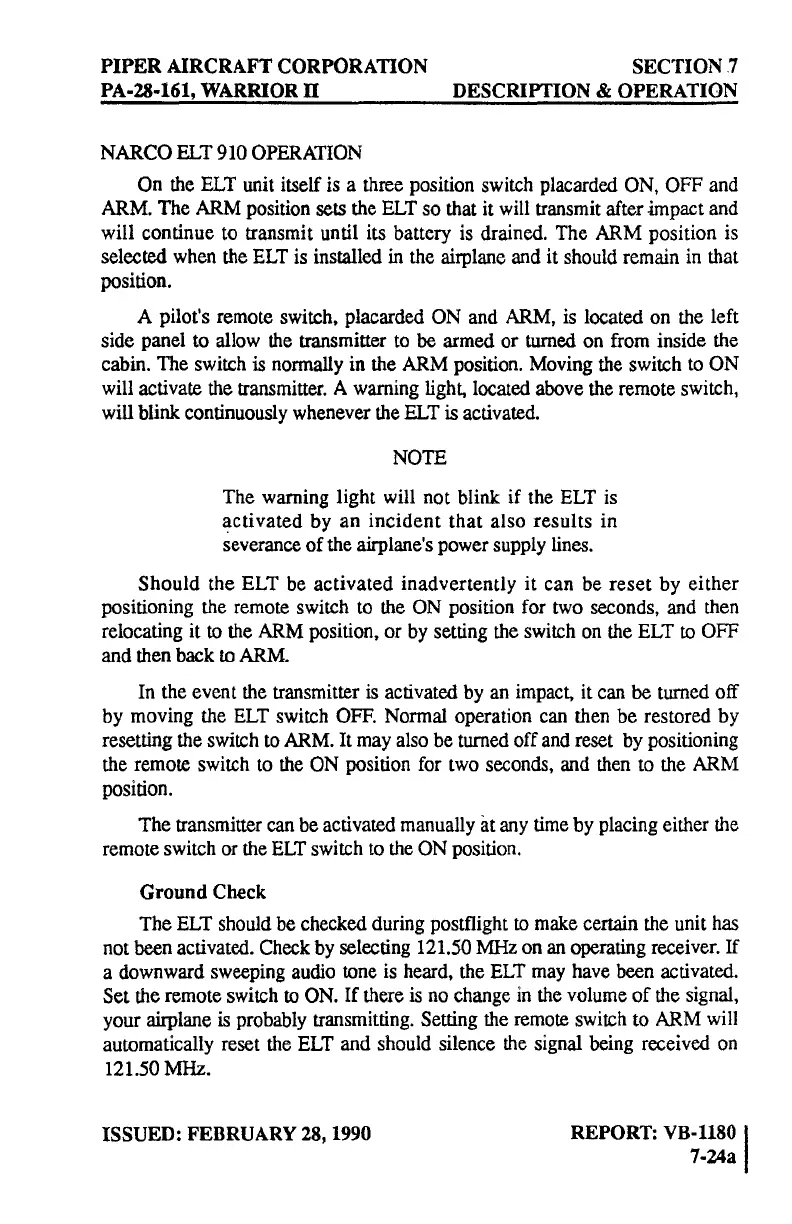